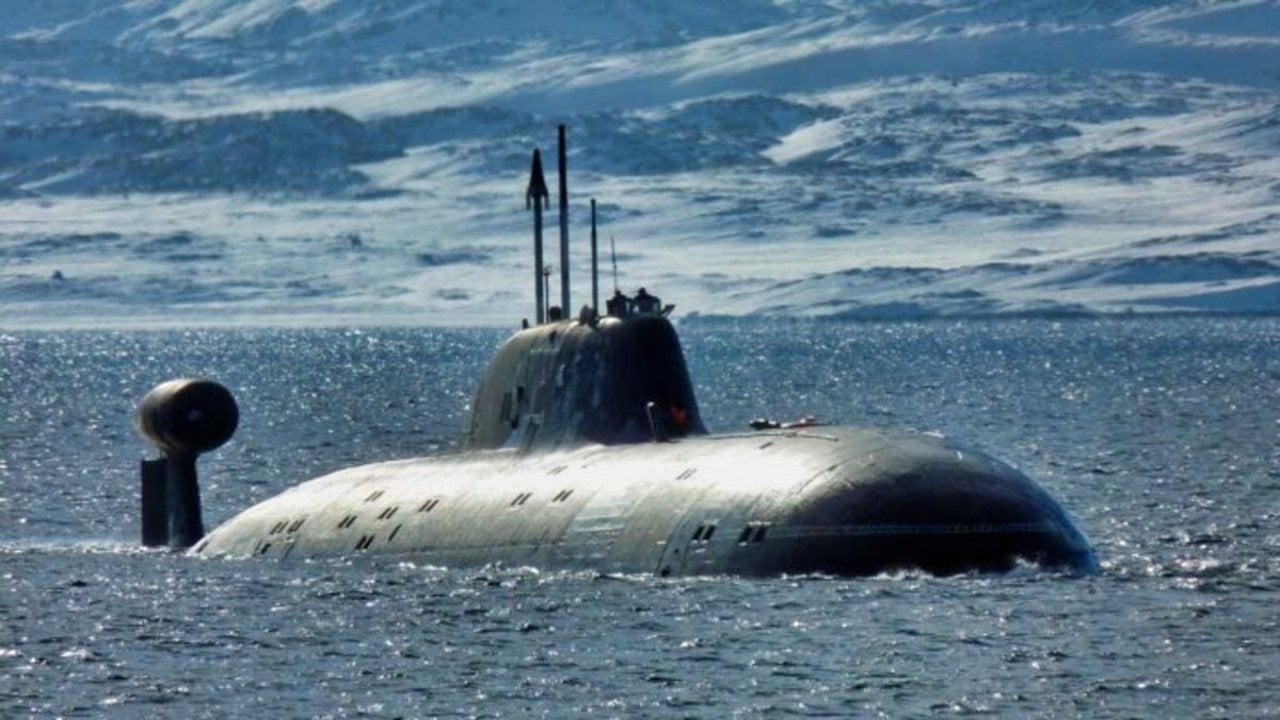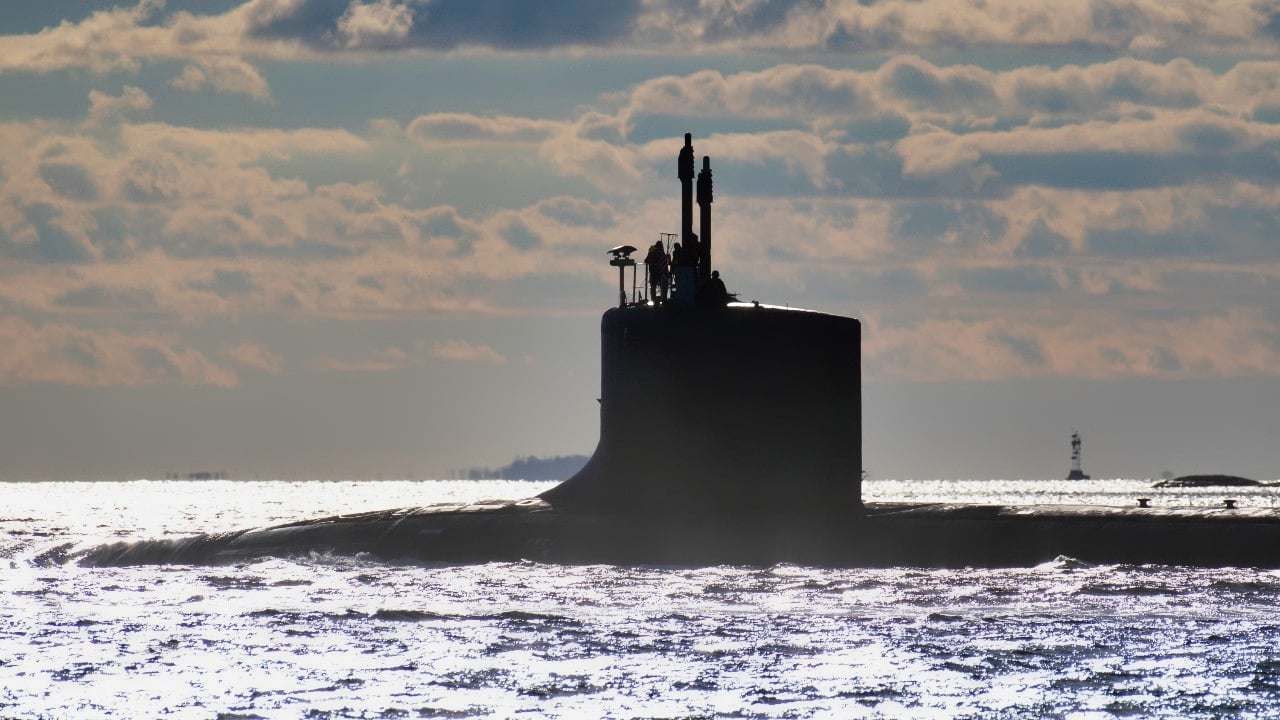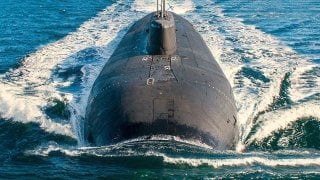Russia's Submarine Force Is On the Comeback Trail
Recent infrastructure upgrades, like the modernization of a pier at the Pacific Fleet base in Fokino, have enabled Russia to commission seven nuclear submarines and could see the addition of 12 surface warships and four submarines in 2024.
What You Need to Know: Recent infrastructure upgrades, like the modernization of a pier at the Pacific Fleet base in Fokino, have enabled Russia to commission seven nuclear submarines and could see the addition of 12 surface warships and four submarines in 2024.

-In contrast, the U.S. Navy faces delays and budget overruns in its Virginia-class submarine program, along with a decline in shipyard facilities and skilled labor. This disparity raises questions about America's capacity to keep pace with Russian naval advancements amid global tensions.
It's Not Russia's Submarines That Should be the Concern: It is How Fast Moscow Can Build Them
There is no shortage of articles online about the capabilities of the Russian Navy's submarines. At no time should those capabilities or the threat that Russia's submarines pose to the United States and its Western allies. The underwater menace is very real, but it isn't really the submarines that should be seen as the biggest concern for Washington.
Instead, it has been Russia's efforts to modernize its infrastructure to produce the submarine fleet and keep it maintained.
According to Russian state media, the Russian Navy has completed a modernization of a pier at the Pacific Fleet base in the town of Fokino, Primorsky Krai. The upgrade "has allowed seven submarines to enter service over the past few years," Tass reported citing Commander of the Pacific Fleet Submarine Forces Vice Admiral Vladimir Dmitriyev.
"This allowed the timely bringing into service of seven nuclear submarines, including five Borey class ballistic missile submarines and two Yasen class ones over the past few years," the vice admiral said during Russian Defense Minister Andrey Belousov's recent visit to the facility.
The Russian Navy Overcoming Some Problems
It remains true that Russia's aging surface combatants – including its flagship aircraft carrier Admiral Kuznetsov and the Project 1144 Orlan Kirov-class guided-missile cruiser Admiral Nakhimov – have been undergoing refits so long Russia could have started from scratch!
The same isn't true of its smaller vessels.
The Russian Navy has been steadily receiving its Project 22800 Karakurt-class missile corvettes, and notably those aforementioned submarines. At least four Yasen-M submarines are now in various stages of construction, while three additional Borei-class submarines are being produced.
In total, the Russian Navy could receive as many as 12 surface warships and four submarines in 2024 – the largest number of vessels launched in decades. Moreover, Moscow has also claimed to have achieved total import substitution in the construction of those vessels. Import substitution industrialization (ISI) is a policy that has been typically enacted by developing countries to enable domestic development and self-sufficiency through the creation of an internal market.
Meanwhile… the Virginia-class
All of the above information would already be concerning, but let's add that the U.S. Navy is now dealing with its latest block of Virginia-class nuclear-powered fast attack submarines now projected to cost more than $17 billion over the planned budget through the end of the decade.

The U.S. sea service has also seen significant delays with the Virginia-class boats, with the program running two to even three years behind schedule while the prices continue to increase.
The two prime contractors for the Virginia-class submarines, General Dynamics and Huntington Ingalls Industries (HII) were contracted to build two submarines a year, but as Bloomberg reported last month, the defense firms are only "averaging the completion of one plus 20% of the work building a second submarine."
Since the 1970s, 14 " defense-related shipyards" have been shuttered, while only one new shipyard has opened. In addition, the number of firms still in the shipbuilding sector has dwindled. Finally, the U.S. shipbuilding industry is facing an ongoing challenge to attract, train, and retain skilled labor.
The U.S. Navy is seeking to address these issues as it prepares for a possible showdown with China, yet, it could be Russia that is being allowed to build up its submarine and surface fleets.
Author Experience and Expertise: Peter Suciu
Peter Suciu is a Michigan-based writer. He has contributed to more than four dozen magazines, newspapers, and websites with over 3,200 published pieces over a twenty-year career in journalism. He regularly writes about military hardware, firearms history, cybersecurity, politics, and international affairs. Peter is also a Contributing Writer for Forbes and Clearance Jobs. You can follow him on Twitter: @PeterSuciu. You can email the author: [email protected].
Image Credit: Creative Commons and/or Shutterstock.


